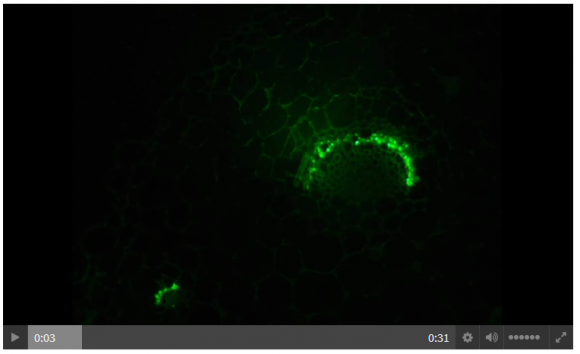New Publication: Deciphering the early stages of viral infections

Reading the words virus or infection, most of us will think of SARS-CoV-2 and the latest infection rates in your hometown.
But we will discuss a different kind of viral infection here: we will have a look at plant viruses and how they infect their hosts.
Especially the early stages of viral infections in plants are not well understood. Commonly applied bulk methods are not suitable to investigate the molecular regulation mechanisms, as only few cells are infected in the early stages and their signals would be hidden by the signals of the overwhelming excess of non-infected cells.
Thus, the authors of the publication “Analyzing the G3BP‑like gene family of Arabidopsis thaliana in early turnip mosaic virus infection” (Reuper et al., Sci Rep 11, 2021) were using laser microdissection to collect only infection sites with minimum non-infected surrounding tissue for transcriptomic analyses.
Dr. Björn Krenz, corresponding author of this publication, summarizes the design and the results of his groundbreaking research:
“In our study, the Ras GTPase-activating protein-binding protein (G3BP)-like protein gene family in A. thaliana in the context of virus infection, namely with Turnip mosaic virus, was investigated. Tissue-specific expression analysis, including laser-dissected phloem gained by the MMi CellCut system, by qRT-PCRs was performed. In addition, the early and late induction of G3BP-like expression upon Turnip mosaic virus infection was investigated by RNAseq and qRT-PCR. The results showed a high divergence of transcription frequency in the different plant tissues, and a general induction by a viral infection with TuMV in A. thaliana. The information gained from these studies leads to a better understanding of stress granules, in particular their molecular mode of action in the plant and their role in plant virus infection.”
Future, even more comprehensive analyses to provide profound insights into the mechanisms of viral infection in the very early stages, have already been proposed by the authors:
“The complete analysis of the TuMV differentially induced expressed genes in A. thaliana tissue at 2 dpi will be described elsewhere and further analyses on the role of AtG3BP-4 in early and systemic virus infection, in general, must and will be performed in the future.”
Find the full publication here:
Analyzing the G3BP-like gene family of Arabidopsis thaliana in early turnip mosaic virus infection.
Reuper H, Amari K, Krenz B. Sci Rep. 2021 Jan 26;11(1):2187. doi: 10.1038/s41598-021-81276-7. PMID: 33500425 Free PMC article.
Please also do not miss to watch the video cutting fluorescently labeled phloem cells by laser microdissection in the supplementary information.
https://www.nature.com/articles/s41598-021-81276-7#Sec201